How Green Energy Solutions Are Revolutionizing The Energy Sector
In recent years, the energy sector has witnessed a remarkable transformation, fueled by the rise of green energy solutions. These innovations are not just a trend; they represent a fundamental shift in how we produce, consume, and think about energy. With the looming threat of climate change and the need for sustainable practices, the urgency for renewable energy sources has never been greater. From solar panels to wind turbines, green energy is not merely an alternative but a necessary evolution in our energy landscape. But what does this mean for us, and how is it reshaping our world? Let’s dive into the details!
Renewable energy sources like solar, wind, and hydropower are gaining traction globally, driven by technological advancements and increasing awareness of climate change. As the world grapples with the consequences of fossil fuel dependence, the shift towards renewables has become more than just a choice; it’s a necessity. Countries are investing heavily in these technologies, recognizing their potential to provide clean, sustainable energy. For instance, solar energy has seen a dramatic increase in adoption, with solar panels becoming a common sight on rooftops around the globe. This is not just about reducing energy bills; it’s about embracing a future where energy is abundant, clean, and sustainable.
Innovations such as energy storage systems, smart grids, and advanced solar panels are revolutionizing how we harness and utilize green energy. These technologies are the backbone of a sustainable energy future, enabling us to capture energy when it's abundant and use it when demand peaks. The integration of these systems allows for a more efficient energy distribution network, reducing waste and maximizing the potential of renewable resources. Imagine a world where your home not only consumes energy but also produces it, feeding excess back into the grid. This is the reality that technological advancements are making possible.
Energy storage technologies, like batteries and pumped hydro, are crucial for balancing supply and demand in renewable energy. These solutions allow us to store excess energy generated during peak production times, ensuring a reliable supply when production dips. For example, during sunny days, solar panels can generate more energy than needed, and energy storage systems can capture that surplus for use during the night or cloudy days. This capability is essential for making renewable energy a viable alternative to traditional fossil fuels, as it addresses one of the biggest challenges in the sector: intermittency.
Recent advancements in battery technology are enhancing energy storage capacity and efficiency. Innovations such as lithium-ion batteries and flow batteries are leading the charge in making energy storage more accessible and affordable. These advancements mean that homes and businesses can invest in storage systems that not only reduce their energy costs but also contribute to a more stable and resilient energy grid. The implications are profound: as battery technology continues to improve, we can expect a significant uptick in the adoption of electric vehicles and renewable energy systems.
Pumped hydro energy storage remains a vital method for large-scale energy storage. This technology works by using excess energy to pump water uphill to a reservoir. When energy is needed, the water is released back down, turning turbines to generate electricity. This method is not only efficient but also has the capacity to store large amounts of energy. It’s a classic example of how we can harness natural processes to meet modern energy needs, blending innovation with sustainability.
Smart grids are transforming energy distribution and consumption by leveraging digital technology. These advanced systems allow for real-time monitoring and management of energy flow, optimizing efficiency and reliability. With smart grids, consumers can track their energy usage and adjust their consumption habits accordingly, leading to significant energy savings. Additionally, these grids facilitate the integration of renewable energy sources, ensuring that clean energy is utilized effectively. It’s like having a personal energy assistant that helps you make the best choices for your home and the planet.
Green energy solutions offer significant environmental and economic advantages, including reduced greenhouse gas emissions and job creation. Transitioning to renewable energy sources not only mitigates the impacts of climate change but also paves the way for a more robust economy. The shift to green energy is creating new markets and industries, resulting in a surge of employment opportunities. This dual benefit of environmental sustainability and economic growth is a compelling reason for governments and businesses to invest in renewable energy.
The shift towards green energy is generating new employment opportunities in various sectors. The renewable energy industry is booming, creating jobs in manufacturing, installation, maintenance, and research. According to recent studies, the green sector is expected to create millions of jobs over the next decade, providing a much-needed boost to the economy. This growth is not just about numbers; it’s about building a workforce that is skilled and ready for the future of energy.
Transitioning to green energy significantly reduces carbon emissions, combating climate change. By shifting away from fossil fuels and embracing renewable sources, we can drastically lower our carbon footprint. This is crucial for achieving global climate goals and ensuring a sustainable future for generations to come. Every solar panel installed and every wind turbine erected is a step towards a cleaner, healthier planet.
- What are the main types of renewable energy? The main types include solar, wind, hydropower, geothermal, and biomass.
- How does solar energy work? Solar panels convert sunlight into electricity through photovoltaic cells.
- What are the benefits of using renewable energy? Benefits include reduced greenhouse gas emissions, energy independence, and job creation.
- Can renewable energy sources meet global energy demands? Yes, with advancements in technology and storage solutions, renewable energy can meet and exceed global energy demands.

The Rise of Renewable Energy
This article explores the transformative impact of green energy solutions on the energy sector, highlighting innovations, benefits, challenges, and future trends that are shaping a sustainable energy landscape.
The world is witnessing a remarkable shift towards renewable energy sources such as solar, wind, and hydropower. This transition is not just a trend; it's a necessity driven by the urgent need to combat climate change and create a sustainable future. With technological advancements and a growing awareness of environmental issues, these energy sources are gaining significant traction globally. Imagine a world where the energy we consume is clean, abundant, and sustainable—this is the vision that renewable energy is making a reality.
As countries around the globe strive to reduce their reliance on fossil fuels, the importance of renewable energy cannot be overstated. The International Energy Agency (IEA) reports that renewable energy sources accounted for nearly 30% of global electricity generation in 2020, a figure that is only expected to rise. This growth is not just about numbers; it represents a fundamental shift in how we produce and consume energy.
One of the key drivers of this rise is the rapid advancement in technology. Solar panels are becoming more efficient and affordable, while wind turbines are being designed to harness energy even in low-wind conditions. These innovations are making it easier for both individuals and businesses to adopt renewable energy solutions. For instance, the cost of solar energy has dropped by over 80% in the past decade, making it an attractive option for homeowners and large-scale solar farms alike.
Moreover, government policies and incentives are playing a crucial role in this transformation. Many countries are implementing subsidies and tax credits to encourage the adoption of renewable energy technologies. These initiatives not only promote clean energy usage but also stimulate economic growth by creating new jobs in the green sector. According to a recent report, the renewable energy sector is projected to create over 24 million jobs worldwide by 2030, highlighting the dual benefits of environmental sustainability and economic development.
However, the rise of renewable energy is not without its challenges. While the technology is advancing rapidly, there are still issues related to energy storage and grid integration that need to be addressed. Renewable energy sources like solar and wind are intermittent, meaning they do not produce energy consistently. This is where energy storage solutions and smart grid technologies come into play, ensuring that we can harness and distribute renewable energy effectively.
In summary, the rise of renewable energy is reshaping the energy sector in profound ways. With continued technological advancements, supportive government policies, and a collective commitment to sustainability, we are on the brink of a new energy era. The future is bright, and it is powered by the sun, the wind, and the water.
- What are the main types of renewable energy? The main types include solar, wind, hydropower, geothermal, and biomass.
- How does renewable energy benefit the environment? It reduces greenhouse gas emissions and decreases air pollution, contributing to a healthier planet.
- Are renewable energy sources reliable? Yes, with advancements in energy storage and smart grid technologies, renewable energy can be reliably integrated into the energy supply.
- What role do governments play in promoting renewable energy? Governments can provide incentives, subsidies, and regulations that encourage the development and adoption of renewable energy solutions.
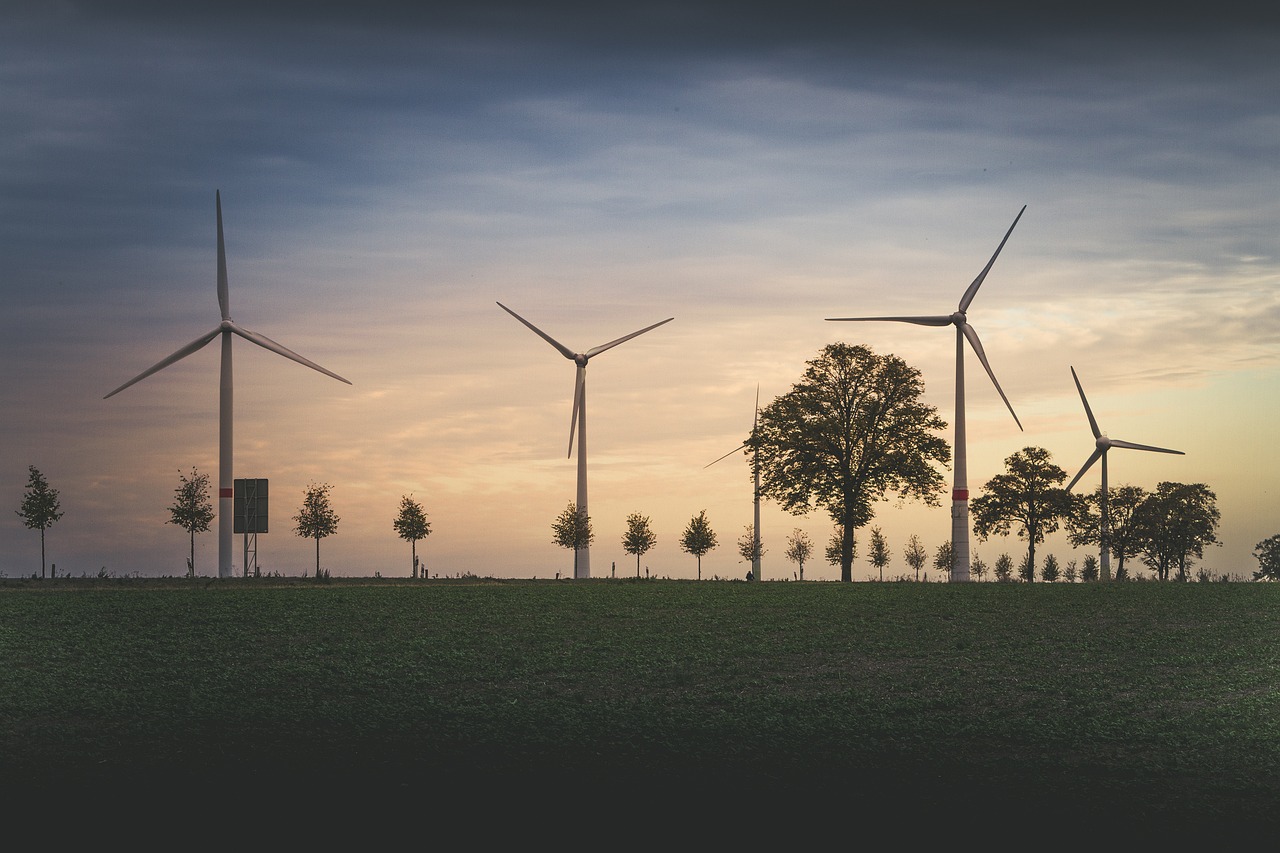
Technological Innovations in Green Energy
The landscape of energy production and consumption is undergoing a monumental shift, and at the heart of this transformation are technological innovations in green energy. These advancements are not just buzzwords; they are the driving forces that are reshaping how we harness, distribute, and utilize energy. Imagine a world where energy is abundant, clean, and accessible to everyone. This is becoming a reality thanks to cutting-edge technologies that are paving the way for a sustainable future.
One of the most exciting developments in this arena is the emergence of energy storage systems. As we rely more on renewable sources like solar and wind, the need for efficient storage solutions becomes critical. Energy storage technologies, including advanced batteries and pumped hydro systems, are essential for managing the intermittent nature of renewable energy. They enable us to store energy generated during sunny or windy days and release it when demand peaks, ensuring a steady and reliable power supply.
Let’s delve deeper into the importance of energy storage. Without effective storage, the benefits of renewable energy could be compromised. For instance, during the day, solar panels might produce more energy than needed, but at night, when the sun sets, demand remains. Here’s where energy storage comes into play. It acts like a buffer, balancing supply and demand. This is crucial for creating a resilient energy grid capable of supporting a higher percentage of renewables.
Recent advancements in battery technology are nothing short of revolutionary. Innovations such as lithium-ion batteries have dramatically improved energy density and lifespan, making them more efficient than ever. These batteries are now being integrated into various applications, from electric vehicles to large-scale energy storage systems. The implications are vast—imagine electric cars that can travel longer distances on a single charge or homes that can store enough energy to power themselves entirely off the grid. The future is bright, and it’s powered by innovation.
Another critical player in the energy storage game is pumped hydro energy storage (PHES). This method has been around for decades but is gaining renewed attention as we transition to more renewable energy sources. PHES works by using excess energy to pump water uphill to a reservoir. When energy demand spikes, the stored water is released to generate electricity. It’s like having a giant battery in the form of a lake! This technology is particularly effective for large-scale energy storage, helping to stabilize the grid and support the integration of renewables.
As we embrace these innovations, we must also look at how we distribute and consume energy. Enter smart grid technologies. These systems utilize digital technology to monitor and manage energy flow more efficiently. Imagine a grid that can communicate with your appliances, optimizing energy use based on real-time data. Smart grids not only enhance energy efficiency but also improve reliability, ensuring that power is available when and where it’s needed most. It’s like having a personal energy assistant that helps you save money and reduce your carbon footprint.
In conclusion, the technological innovations in green energy are not just transforming the energy sector; they are revolutionizing our entire approach to energy. From energy storage solutions that ensure reliability to smart grids that optimize consumption, these advancements are paving the way for a sustainable energy future. As we continue to innovate and adapt, the possibilities are endless, and the transition to a greener world is well underway.
- What are the main types of renewable energy? The main types include solar, wind, hydro, geothermal, and biomass energy.
- How do energy storage systems work? They store excess energy generated during peak production times and release it when demand is high.
- What is a smart grid? A smart grid uses digital technology to enhance the efficiency and reliability of electricity distribution.
- Why is transitioning to green energy important? It helps reduce greenhouse gas emissions, combats climate change, and promotes sustainable economic growth.
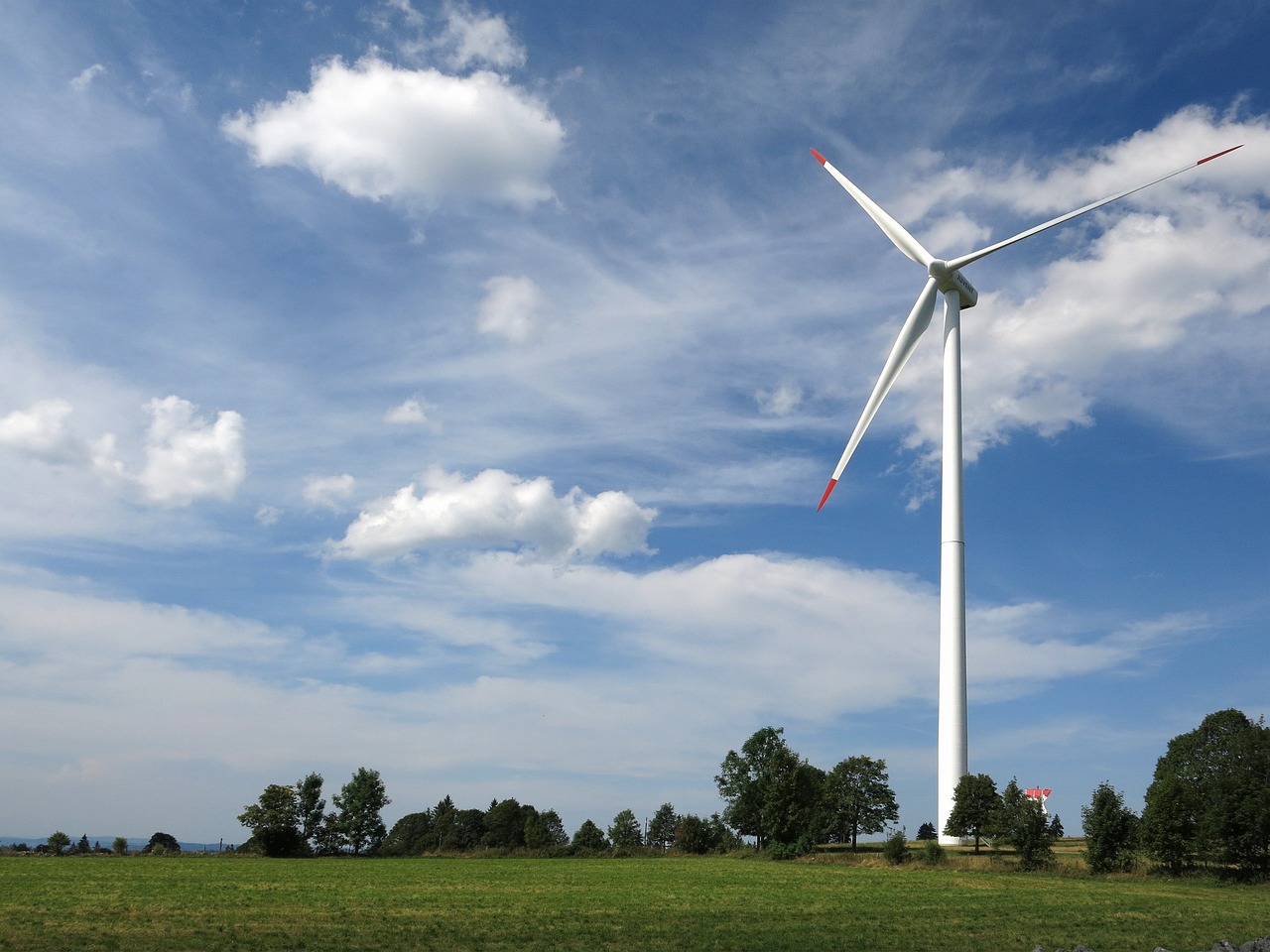
Energy Storage Solutions
In the world of renewable energy, one of the most critical components that often gets overshadowed is . Imagine a world where the sun shines bright during the day, but your energy needs peak during the night. How do you harness that solar power when it’s not shining? This is where energy storage comes into play, acting as a bridge between energy generation and consumption. These solutions are essential for balancing the supply and demand of renewable energy, ensuring that we can rely on it even when the weather doesn’t cooperate.
There are several types of energy storage technologies available today, each with its unique benefits and applications. From batteries to pumped hydro storage, the innovation in this field is nothing short of revolutionary. Let’s delve into some of the most prominent energy storage solutions that are shaping the future of the energy landscape:
- Batteries: These are the most common form of energy storage, particularly lithium-ion batteries, which have made headlines for their efficiency and capacity. They are widely used in everything from electric vehicles to home solar systems.
- Pumped Hydro Storage: This method involves pumping water to a higher elevation during periods of low energy demand and releasing it to generate electricity when demand is high. It’s like a giant water battery!
- Flywheels: These devices store energy in the form of rotational kinetic energy. They are excellent for providing short bursts of energy and are often used in grid stabilization.
Each of these technologies plays a vital role in ensuring that renewable energy can be stored and dispatched as needed. For instance, the rise of electric vehicles has spurred advancements in battery technology, making them more efficient and cost-effective. The future of energy storage lies in not just improving these technologies but also in integrating them into a smart grid system that can optimize energy distribution.
As we continue to innovate, energy storage solutions will not only help in achieving a reliable energy future but will also significantly impact our ability to reduce greenhouse gas emissions. By storing excess energy generated from renewable sources, we can minimize reliance on fossil fuels, thereby cutting down our carbon footprint.
In summary, energy storage solutions are a linchpin in the transition to a sustainable energy future. They enable us to harness the full potential of renewable energy sources, ensuring that we can meet our energy demands efficiently and sustainably. The more we invest in these technologies, the closer we get to a world where clean energy is the norm, not the exception.
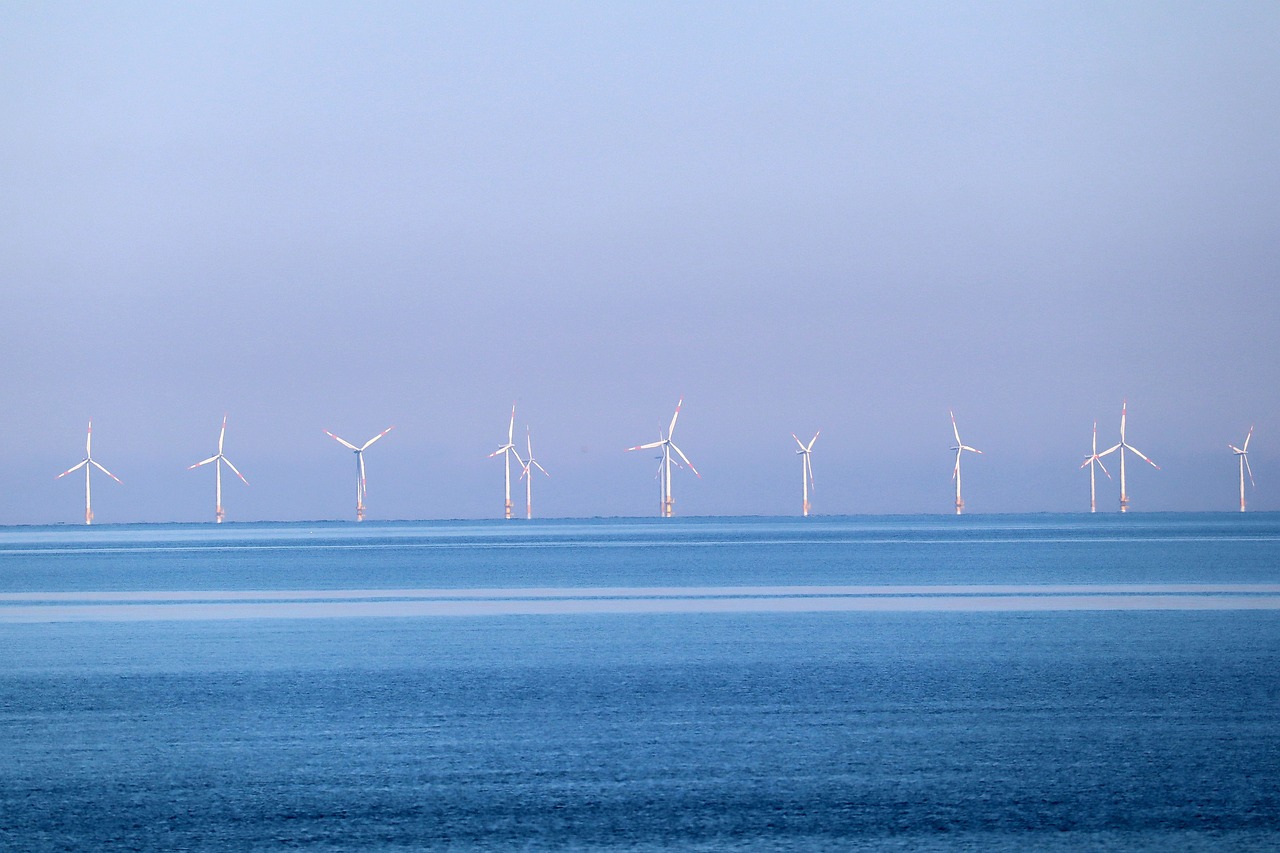
Battery Technology Advancements
In recent years, the world has witnessed a remarkable surge in , which are pivotal for the integration of renewable energy sources. As we strive for a greener future, these innovations not only enhance energy storage capacity but also improve efficiency, making renewable energy solutions more viable than ever. Imagine a world where you can harness the sun's energy during the day and have it power your home at night—this is becoming a reality thanks to cutting-edge battery technologies.
One of the most exciting developments in battery technology is the evolution of lithium-ion batteries. These batteries are now more efficient, durable, and capable of holding greater amounts of energy. For instance, advancements in battery chemistry have led to the creation of batteries that can last longer and charge faster. This means that electric vehicles (EVs) can travel further on a single charge, making them more appealing to consumers. Furthermore, the reduction in costs associated with these batteries has made them more accessible, paving the way for widespread adoption.
Another significant breakthrough is the development of solid-state batteries. Unlike traditional lithium-ion batteries that use liquid electrolytes, solid-state batteries utilize solid electrolytes, which can potentially offer higher energy densities and enhanced safety. This technology is akin to upgrading from a flimsy old flip phone to a sleek smartphone—solid-state batteries promise to revolutionize how we store and use energy.
To illustrate the advancements in battery technology, consider the following table that highlights key features of different battery types:
| Battery Type | Energy Density (Wh/kg) | Cycle Life (Charge/Discharge) | Safety |
|---|---|---|---|
| Lithium-Ion | 150-250 | 500-1500 | Moderate |
| Solid-State | 300-500 | 2000+ | High |
| Flow Batteries | 20-50 | 2000+ | High |
Moreover, energy density plays a critical role in determining how much energy can be stored in a given volume. As battery technology continues to advance, we can expect to see even higher energy densities, which will allow for more compact and efficient energy storage solutions. This is particularly important for applications such as electric vehicles and grid storage, where space and weight are significant considerations.
As we look to the future, the integration of artificial intelligence (AI) and machine learning into battery technology is another frontier that holds great promise. These technologies can optimize battery performance by predicting usage patterns and adjusting charging cycles accordingly. It’s like having a personal assistant for your battery—ensuring that it’s always ready when you need it most.
In summary, the advancements in battery technology are not just a trend; they are a revolution in how we think about energy storage and utilization. With each innovation, we move closer to a sustainable energy future where renewable resources can be harnessed efficiently and effectively. As we continue to explore these technologies, the possibilities are endless, and the impact on our energy landscape will be profound.
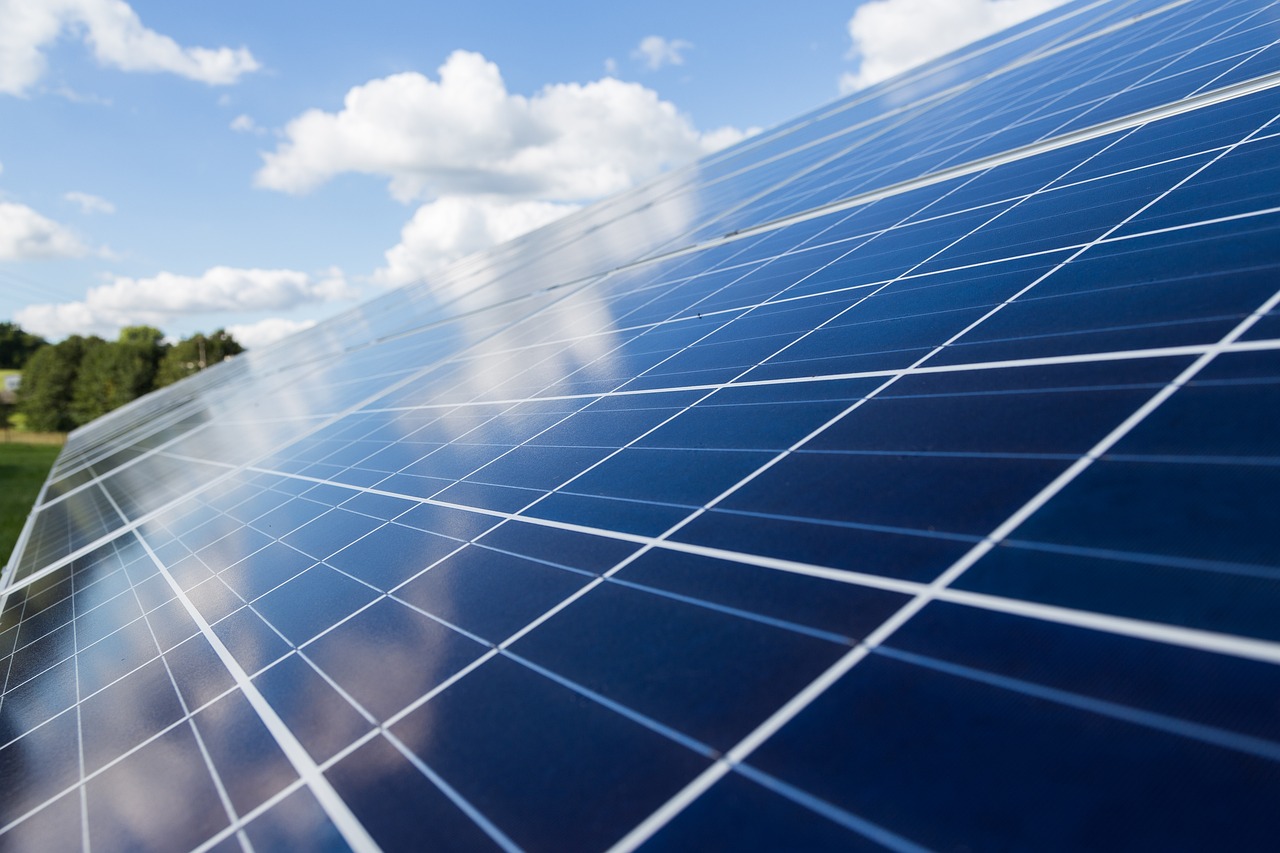
Pumped Hydro Energy Storage
Pumped hydro energy storage (PHES) is one of the most established and effective methods for large-scale energy storage, playing a crucial role in balancing the intermittent nature of renewable energy sources like wind and solar. Imagine a giant water reservoir situated at a higher elevation, ready to unleash its potential energy whenever needed. This is essentially how pumped hydro works; during periods of low energy demand, excess electricity generated from renewable sources is used to pump water uphill to a reservoir. When demand spikes, the stored water is released back down through turbines, generating electricity in the process. It's like having a massive battery made of water!
The beauty of pumped hydro lies in its efficiency and scalability. According to recent studies, PHES can achieve an efficiency rate of around 70-90%, meaning that a significant portion of the energy used to pump the water can be recovered when generating electricity. This high efficiency makes it a favored choice among utility companies aiming to integrate more renewable energy into their grids. Moreover, the ability to store large amounts of energy makes it particularly valuable for stabilizing the grid during fluctuations caused by unpredictable weather patterns.
One of the key advantages of pumped hydro energy storage is its longevity. Unlike chemical batteries, which may degrade over time and require replacement, pumped hydro systems can operate for decades with minimal maintenance. This durability contributes to lower long-term costs, making it an economically viable option for energy storage. However, it’s important to note that the construction of pumped hydro facilities can be capital-intensive and requires specific geographical conditions, such as suitable elevation differences and water availability.
As the world shifts towards a more sustainable energy future, the role of pumped hydro is becoming increasingly significant. It not only helps to mitigate the challenges posed by renewable energy intermittency but also supports grid reliability, ensuring that energy is available when consumers need it the most. In fact, many countries are investing in new pumped hydro projects, recognizing their potential to create a more resilient and sustainable energy landscape.
In conclusion, pumped hydro energy storage stands out as a reliable and efficient solution for energy storage challenges. It exemplifies how we can harness natural resources to support our energy needs while promoting sustainability. As we continue to innovate and improve our energy systems, technologies like pumped hydro will undoubtedly play a pivotal role in shaping our green energy future.
- What is pumped hydro energy storage?
Pumped hydro energy storage is a method of storing energy by using excess electricity to pump water uphill to a reservoir, which can then be released to generate electricity when needed.
- How efficient is pumped hydro energy storage?
Pumped hydro systems typically achieve an efficiency rate of 70-90%, making them one of the most efficient forms of energy storage available.
- What are the advantages of pumped hydro over other energy storage methods?
Pumped hydro offers long-term durability, high efficiency, and the ability to store large amounts of energy, which makes it a cost-effective solution for stabilizing the energy grid.
- Are there any environmental concerns associated with pumped hydro energy storage?
While pumped hydro is generally considered environmentally friendly, it can have localized impacts on ecosystems and water resources, which must be carefully managed during the planning and construction phases.

Smart Grid Technologies
Imagine a world where your energy consumption is as efficient as your daily coffee run—where every kilowatt hour is maximized, and you never have to worry about outages or overpaying on your electricity bill. This is the promise of , which are transforming how energy is distributed and consumed. Smart grids utilize digital technology to enhance the reliability, efficiency, and sustainability of energy systems. They act as a two-way communication network between energy providers and consumers, allowing for real-time data exchange that optimizes energy usage.
At the heart of smart grid technology is the concept of interconnectivity. By integrating advanced sensors, smart meters, and automated control systems, smart grids provide a more responsive and flexible energy system. For instance, when energy demand peaks, smart grids can automatically reroute power from less busy areas, ensuring that everyone has access to electricity without overloading the system. This level of responsiveness not only improves reliability but also helps in reducing energy waste—a win-win for both consumers and the environment.
Furthermore, smart grids facilitate the incorporation of renewable energy sources into the existing energy mix. With the rise of solar and wind power, managing the variability of these sources becomes crucial. Smart grids can adjust energy distribution based on real-time data about weather conditions and energy production levels. For example, on a sunny day when solar generation is high, the smart grid can direct more energy to areas where demand is increasing, thus maximizing the use of renewable resources.
To give you a clearer picture, consider the following table that outlines the key components of smart grid technologies:
| Component | Description |
|---|---|
| Smart Meters | Devices that provide real-time data on energy usage to both consumers and utility companies. |
| Advanced Sensors | Monitor energy flow and detect outages or inefficiencies in the grid. |
| Automated Control Systems | Manage the distribution of energy based on real-time data, improving efficiency. |
| Communication Networks | Facilitate data exchange between consumers, utilities, and renewable energy sources. |
In addition to improving efficiency, smart grids also empower consumers. With access to detailed energy usage data, individuals can make informed decisions about their energy consumption habits. For instance, if you see that your energy usage spikes during certain hours, you can adjust your habits—perhaps by running your dishwasher at night when rates are lower. This level of consumer engagement is crucial for creating a more sustainable energy future.
However, it’s important to acknowledge that the transition to smart grids is not without challenges. Issues such as cybersecurity threats, the need for significant infrastructure investment, and regulatory hurdles must be addressed to fully realize the potential of smart grid technologies. But the benefits—greater energy efficiency, reduced greenhouse gas emissions, and enhanced reliability—make it a worthy pursuit.
In summary, smart grid technologies are not just a trend; they represent a fundamental shift in how we think about energy. By leveraging advanced technology and fostering greater consumer engagement, smart grids are paving the way for a more sustainable and efficient energy future. So, the next time you flip a switch or charge your phone, remember that there’s a smart grid working behind the scenes to make sure you have the energy you need, when you need it.
- What is a smart grid? A smart grid is an electricity supply network that uses digital technology to monitor and manage the transport of electricity from all generation sources to meet the varying electricity demands of end users.
- How do smart grids benefit consumers? Smart grids provide consumers with real-time data on their energy usage, enabling them to make informed decisions that can lead to cost savings and reduced energy consumption.
- What challenges do smart grids face? Challenges include cybersecurity risks, the need for significant infrastructure investment, and regulatory issues that must be navigated to implement smart grid technologies effectively.
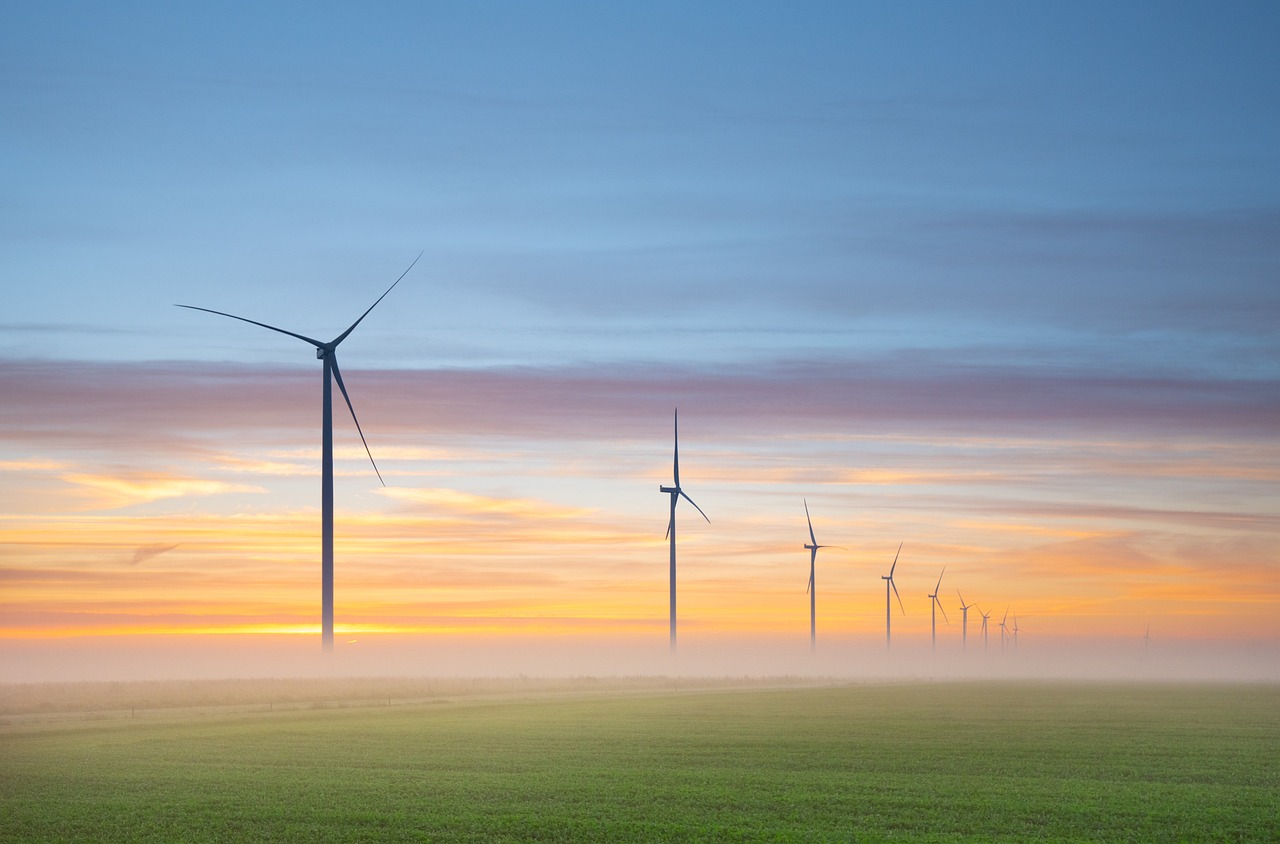
Environmental and Economic Benefits
Green energy solutions are not just a trend; they represent a paradigm shift in how we think about energy production and consumption. The transition from fossil fuels to renewable energy sources like solar, wind, and hydropower is a game-changer, bringing with it a plethora of . One of the most significant advantages is the reduction of greenhouse gas emissions. By harnessing the power of nature, we can drastically decrease the amount of carbon dioxide released into the atmosphere, which is crucial for combating climate change. The evidence is clear: countries that invest in green energy are witnessing a notable decline in their carbon footprints.
Moreover, the economic benefits of green energy cannot be overstated. The renewable energy sector is a burgeoning field, creating jobs at an unprecedented rate. In fact, the International Renewable Energy Agency (IRENA) reported that the global renewable energy sector employed over 11 million people in 2018, and that number is only expected to grow. This surge in employment opportunities spans various roles, from engineering and manufacturing to installation and maintenance. The creation of these jobs not only boosts local economies but also helps to foster a more sustainable future.
In addition to job creation, green energy solutions can lead to lower energy costs for consumers. As technology advances and production scales up, the cost of renewable energy continues to decline. For instance, the cost of solar energy has dropped by over 80% since 2010, making it more accessible to households and businesses alike. This shift not only benefits the environment but also empowers consumers to take control of their energy bills.
Furthermore, the integration of green energy into the grid enhances energy security. By diversifying our energy sources, we reduce dependence on imported fuels, which can be subject to volatile market prices and geopolitical tensions. A more resilient energy system is not just beneficial for consumers but also for national security.
To summarize, the environmental and economic benefits of transitioning to green energy are profound:
- Reduced Greenhouse Gas Emissions: A significant drop in carbon emissions helps combat climate change.
- Job Creation: The renewable energy sector is rapidly growing, providing millions of jobs worldwide.
- Lower Energy Costs: As technology advances, renewable energy becomes more affordable for consumers.
- Enhanced Energy Security: A diverse energy portfolio reduces dependence on imported fuels.
In essence, embracing green energy solutions is not merely an environmental imperative; it is also an economic opportunity that can lead to a more sustainable and prosperous future. The path forward is clear: by investing in renewable energy, we can create a win-win scenario for both our planet and our economies.
1. What are the main benefits of green energy?
Green energy offers numerous benefits, including reduced greenhouse gas emissions, job creation, lower energy costs, and enhanced energy security.
2. How does green energy impact the economy?
The shift to green energy creates new job opportunities, stimulates local economies, and can lead to lower energy prices for consumers.
3. What types of renewable energy are available?
The most common types of renewable energy include solar, wind, hydro, geothermal, and biomass.
4. Can green energy sources meet global energy demands?
Yes, with advancements in technology and energy storage solutions, renewable energy can meet a significant portion of global energy demands.
5. How can individuals contribute to the green energy movement?
Individuals can contribute by using renewable energy sources, reducing energy consumption, and supporting policies that promote green energy initiatives.
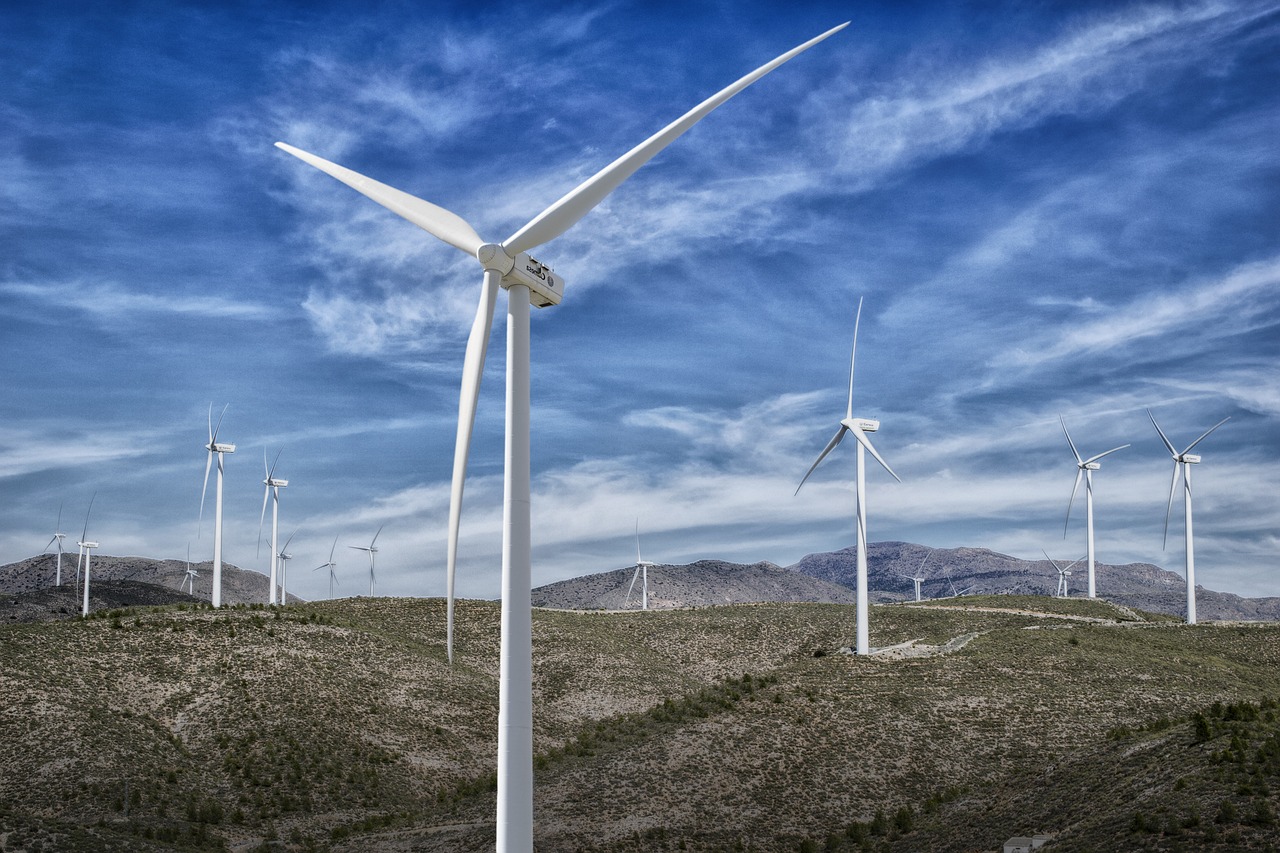
Job Creation in the Green Sector
The transition to green energy isn't just about saving the planet; it's also about creating a wealth of new job opportunities. As we pivot from fossil fuels to renewable sources like solar, wind, and hydropower, the green sector is blossoming, offering a variety of roles that cater to diverse skill sets. Imagine a world where your job not only pays the bills but also contributes to a healthier environment—sounds appealing, right?
According to recent studies, the renewable energy sector has been a significant driver of employment growth. In fact, the International Renewable Energy Agency (IRENA) reported that the renewable energy industry employed over 11 million people globally in 2018, with numbers expected to rise as more countries commit to sustainable energy goals. This growth is not just a fleeting trend; it's a fundamental shift in how we power our lives.
So, what types of jobs are emerging in this vibrant green sector? Here’s a quick overview:
- Installation and Maintenance: Technicians and engineers are in high demand for the installation and upkeep of solar panels, wind turbines, and other renewable technologies.
- Research and Development: Scientists and researchers are exploring innovative ways to enhance the efficiency of renewable energy systems.
- Policy and Advocacy: As governments worldwide push for greener policies, there’s a growing need for professionals who can navigate the complex regulatory landscape.
- Manufacturing: The production of renewable energy equipment, such as solar cells and wind turbines, requires a skilled workforce, boosting manufacturing jobs.
These roles aren't just limited to technical positions; they also encompass areas like project management, marketing, and sales, creating a holistic ecosystem of employment opportunities. The beauty of this shift is that it opens doors for individuals from various backgrounds, including those transitioning from traditional energy sectors. Think of it as a bridge—connecting workers with new, sustainable paths while paving the way for a greener future.
Moreover, the economic ripple effect of job creation in the green sector extends beyond just employment. As these jobs proliferate, they stimulate local economies, foster innovation, and encourage investment in infrastructure. Communities that embrace green energy not only benefit from cleaner air and reduced carbon footprints but also enjoy a surge in economic vitality.
However, this transition isn't without its challenges. The shift to green energy requires targeted training programs to equip the workforce with the necessary skills. Educational institutions and private organizations are stepping up, providing courses and certifications tailored to the needs of the renewable energy sector. The more we invest in education and training, the smoother the transition will be, ensuring that the workforce is ready to meet the demands of this burgeoning industry.
In summary, the green sector is a beacon of hope, illuminating the path toward a sustainable future while generating an array of job opportunities. By embracing renewable energy, we are not just combating climate change; we are also forging a new economic landscape that prioritizes sustainability and resilience. As we look ahead, it's clear that the green revolution is not just an environmental imperative but also an economic opportunity that we cannot afford to overlook.
Q1: What types of jobs are available in the green energy sector?
A1: The green energy sector offers a variety of jobs including installation and maintenance of renewable energy systems, research and development positions, policy advocacy roles, and manufacturing jobs related to renewable energy equipment.
Q2: How does the transition to green energy impact local economies?
A2: Transitioning to green energy stimulates local economies by creating jobs, fostering innovation, and encouraging investment in infrastructure, leading to overall economic vitality.
Q3: What challenges does the green energy sector face in terms of workforce?
A3: One of the main challenges is the need for targeted training programs to equip workers with the necessary skills for emerging roles in the renewable energy sector.

Reducing Carbon Footprint
Transitioning to green energy is not just a trend; it's a necessity for our planet's survival. By embracing renewable energy sources such as solar, wind, and hydropower, we can significantly reduce our carbon footprint. But what exactly does this mean? Well, think of it this way: every time we choose clean energy over fossil fuels, we are essentially hitting the brakes on climate change, slowing down the damage we've done to our environment over the years.
One of the most striking benefits of renewable energy is its ability to drastically lower greenhouse gas emissions. According to recent studies, the energy sector is responsible for about 70% of total global emissions. By replacing traditional energy sources with renewables, we can cut these emissions significantly. For instance, the use of solar panels can reduce an individual's carbon footprint by more than 80% compared to conventional energy sources. Isn't that a compelling reason to make the switch?
Moreover, when we talk about reducing our carbon footprint, it's essential to recognize the role of energy efficiency. Implementing energy-efficient technologies in our homes and businesses—like LED lighting, smart thermostats, and energy-efficient appliances—can further amplify the impact of renewable energy. These technologies not only save money on energy bills but also contribute to a more sustainable future by minimizing energy waste.
To put it into perspective, let’s take a look at the following table that illustrates the potential reduction in carbon emissions based on different energy sources:
| Energy Source | Average CO2 Emissions (g/kWh) | Renewable Energy Contribution |
|---|---|---|
| Coal | 900 | 0% |
| Natural Gas | 400 | 0% |
| Solar | 50 | 80% reduction |
| Wind | 15 | 90% reduction |
| Hydropower | 30 | 85% reduction |
As you can see, the difference is staggering. By switching to renewable energy, we are not just making a choice; we are making a statement about our commitment to a healthier planet. But the journey doesn’t end here. It’s also crucial to adopt sustainable practices in our daily lives, such as reducing waste, recycling, and opting for public transport or carpooling. These small changes can collectively lead to a significant reduction in our overall carbon footprint.
In conclusion, reducing our carbon footprint through green energy solutions is not just beneficial for the environment; it’s a vital step toward a sustainable future. The more we invest in renewable energy and energy-efficient technologies, the more we can mitigate the effects of climate change and promote a healthier planet for future generations. So, why wait? Let’s embrace the change and be part of the solution!
- What is a carbon footprint?
A carbon footprint is the total amount of greenhouse gases, primarily carbon dioxide, that are emitted directly or indirectly by an individual, organization, event, or product.
- How do renewable energy sources reduce carbon emissions?
Renewable energy sources produce little to no greenhouse gases during operation, which significantly lowers the overall carbon emissions compared to fossil fuels.
- Can I reduce my carbon footprint at home?
Yes! You can reduce your carbon footprint by using energy-efficient appliances, switching to renewable energy sources, and adopting sustainable practices like recycling and reducing waste.
Frequently Asked Questions
- What are green energy solutions?
Green energy solutions refer to energy sources that are renewable and sustainable, such as solar, wind, and hydropower. These solutions aim to reduce environmental impact and combat climate change by providing cleaner alternatives to fossil fuels.
- How do renewable energy sources benefit the environment?
Renewable energy sources significantly reduce greenhouse gas emissions, which are a major contributor to global warming. By transitioning to these sources, we can lower our carbon footprint, improve air quality, and promote a healthier planet for future generations.
- What innovations are driving the green energy sector?
Technological advancements such as energy storage systems, smart grids, and improved solar panel efficiency are revolutionizing the green energy sector. These innovations enhance the way we harness and distribute renewable energy, making it more reliable and efficient.
- Why is energy storage important for renewable energy?
Energy storage is crucial because it helps balance the supply and demand of renewable energy. Technologies like batteries and pumped hydro storage ensure that energy generated during peak production times can be stored and used when demand is high, leading to a more stable energy grid.
- What role do smart grids play in energy distribution?
Smart grids utilize digital technology to optimize energy distribution and consumption. They improve efficiency by allowing real-time monitoring and management of energy flow, reducing waste, and enhancing reliability in energy delivery.
- How does the shift to green energy create jobs?
The transition to green energy is generating a plethora of job opportunities across various sectors, from manufacturing solar panels to installing wind turbines. This growth not only supports economic development but also fosters innovation and skills in the job market.
- Can green energy solutions help combat climate change?
Absolutely! By reducing reliance on fossil fuels and lowering carbon emissions, green energy solutions play a vital role in combating climate change. They contribute to a sustainable future by promoting cleaner air and a healthier environment.



















